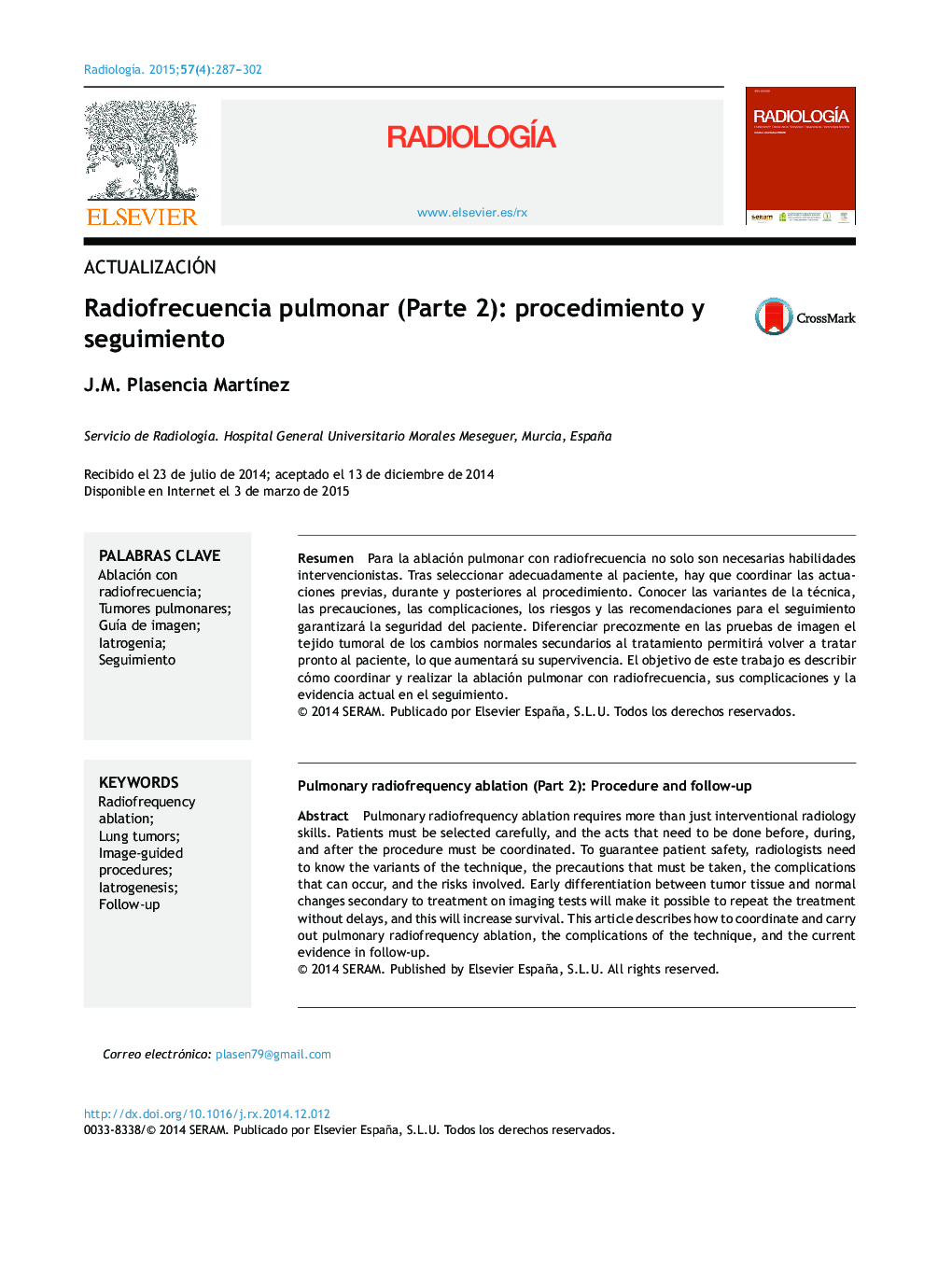| Article ID | Journal | Published Year | Pages | File Type |
|---|---|---|---|---|
| 4245276 | Radiología | 2015 | 16 Pages |
Abstract
Pulmonary radiofrequency ablation requires more than just interventional radiology skills. Patients must be selected carefully, and the acts that need to be done before, during, and after the procedure must be coordinated. To guarantee patient safety, radiologists need to know the variants of the technique, the precautions that must be taken, the complications that can occur, and the risks involved. Early differentiation between tumor tissue and normal changes secondary to treatment on imaging tests will make it possible to repeat the treatment without delays, and this will increase survival. This article describes how to coordinate and carry out pulmonary radiofrequency ablation, the complications of the technique, and the current evidence in follow-up.
Keywords
Related Topics
Health Sciences
Medicine and Dentistry
Radiology and Imaging
Authors
J.M. Plasencia MartÃnez,
